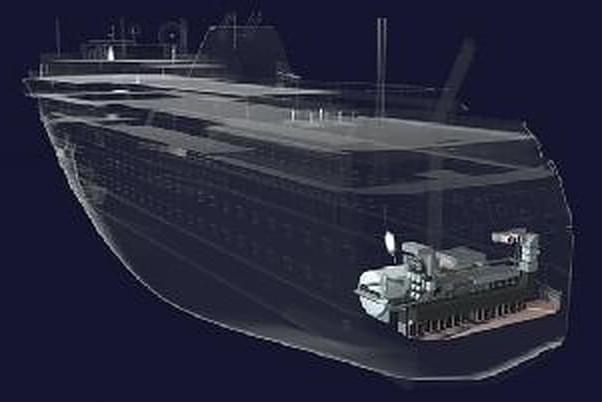Get the latest international news and world events from around the world.



The Hydrogen Stream: Hydrogen system for marine vessels
Duisburg, a massive inland port in Germany, is building a new container terminal on a former coal island. The port will reportedly become climate neutral via a hydrogen-based supply network that is set for operation by 2023. “Our mtu fuel cell solutions for electrical peak load coverage as well as mtu hydrogen heat and power generation station will supply the future terminal with electrical energy and heat in a sustainable way,” said Rolls-Royce Power Systems. The hydrogen-powered mtu fuel cell solutions will supply electrical power as soon as the public grid reaches its limits, while waste heat will partly be used to heat buildings around the port.
CWP has signed a framework agreement with the government of Mauritania to develop a planned 30 GW green hydrogen project. The $40 billion AMAN project will include 18 GW of wind capacity and 12 GW of solar. It will generate approximately 110 TWh per year at full capacity.

What is Kinetic 7 and is it the Breakthrough Energy Source the Hype is Promoting or is it a Hoax?
Voltage Enterprises is an Abu Dhabi-based company founded a year ago. It describes itself as a disruptive energy innovator. It claims to have invented a zero-carbon emissions fuel that is cheaper than natural gas. It calls the fuel Kinetic 7 ™. The information I received states:
“The clean gas, which is carbon neutral with net-zero emissions, will give global economies access to a cheap, endless supply of clean energy. Importantly, it will allow countries to maintain the security of their gas and energy supplies whilst also meeting their carbon-neutral net-zero targets. This discovery could play a major role in reversing the global energy crisis, significantly reducing energy costs to the consumer and businesses sectors at a time when the cost-of-living crisis is worsening, and inflation has reached a 40-year high.”
If that doesn’t sound fantastic to you then I am surprised. Kinetic 7 is purportedly manna from heaven for the energy industry or represents disruptive change on a global scale. So which is it and what is it?

Dogs found to be effective for mass screening people for COVID-19
A team of researchers affiliated with several institutions in France and one in the United Arabian Emirates, has found via testing that dogs may be as effective at mass screening people for COVID-19 as publicly available tests. In their paper published on the open-access site PLOS ONE, the group describes how they tested multiple dogs sniffling human sweat samples for COVID-19 and how well they did.
Prior research has suggested that dogs can smell it when someone near them has a disease, such as cancer. Some research has also suggested that dogs might be able to do the same with COVID-19. To find out if that is indeed the case, the researchers tested the sniffing ability of multiple dogs faced with multiple sweat samples.
To test their ability to recognize COVID-19, multiple dogs were trained to sniff samples of human sweat and to sit down if they detected the virus. Training was done in ways similar to that done with dogs trained to sniff out explosives. Once they were tested, the dogs were taken to the Alfort School of Veterinary Medicine where cones had been set up with sweat samples in them.

An Actively Exploited Microsoft Zero-Day Flaw Still Doesn’t Have a Patch
“After public knowledge of the exploit grew, we began seeing an immediate response from a variety of attackers beginning to use it,” says Tom Hegel, senior threat researcher at security firm SentinelOne. He adds that while attackers have primarily been observed exploiting the flaw through malicious documents thus far, researchers have discovered other methods as well, including the manipulation of HTML content in network traffic.
“While the malicious document approach is highly concerning, the less documented methods by which the exploit can be triggered are troubling until patched,” Hegel says. “I would expect opportunistic and targeted threat actors to use this vulnerability in a variety of ways when the option is available—it’s just too easy.”
The vulnerability is present in all supported versions of Windows and can be exploited through Microsoft Office 365, Office 2013 through 2019, Office 2021, and Office ProPlus. Microsoft’s main proposed mitigation involves disabling a specific protocol within Support Diagnostic Tool and using Microsoft Defender Antivirus to monitor for and block exploitation.

Global plastic use and waste on track to triple by 2060
A world severely blighted by plastic pollution is on track to see the use of plastics nearly triple in less than four decades, according to findings released Friday.
Annual production of fossil-fuel-based plastics are set to top 1.2 billion tonnes by 2060 and waste to exceed one billion tonnes, according to the Organisation for Economic Co-operation and Development (OECD).
Even with aggressive action to cut demand and improve efficiencies, plastic production would almost double in less than 40 years, the 38-nation body projects in a report.